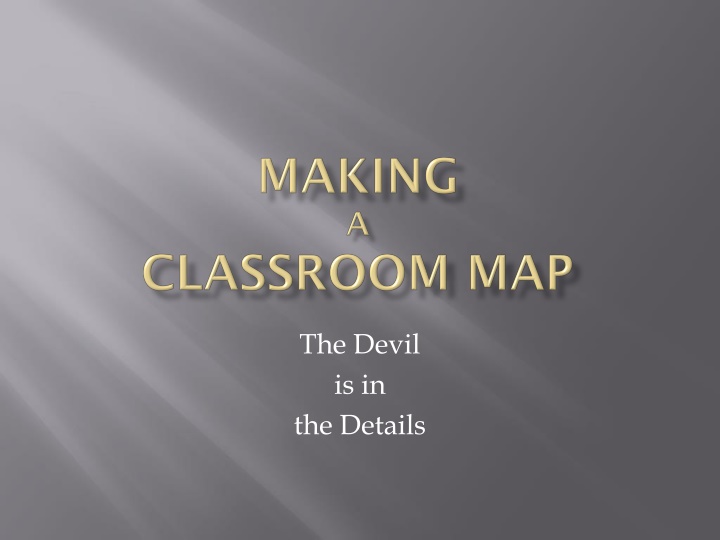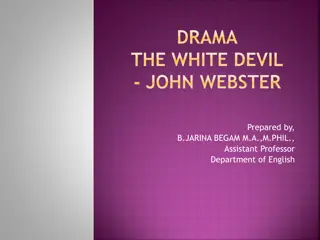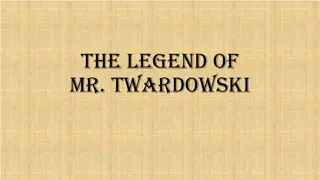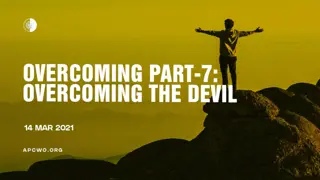The Devil is in the Details
Delve into the intricate world of maps and spatial awareness, from recognizing places on globes to constructing maps of local communities. Explore how humans interact with and change their environments, and ponder the concept of scale through models like a school bus. Get hands-on with spatial organization, land use, and cultural diversity as you consider responsible interactions with the environment.
Download Presentation

Please find below an Image/Link to download the presentation.
The content on the website is provided AS IS for your information and personal use only. It may not be sold, licensed, or shared on other websites without obtaining consent from the author.If you encounter any issues during the download, it is possible that the publisher has removed the file from their server.
You are allowed to download the files provided on this website for personal or commercial use, subject to the condition that they are used lawfully. All files are the property of their respective owners.
The content on the website is provided AS IS for your information and personal use only. It may not be sold, licensed, or shared on other websites without obtaining consent from the author.
E N D
Presentation Transcript
The Devil is in the Details
K G1.0.1 Recognize that maps and globes represent places. K G1.0.2 Use environmental directions or positional words (up/down, in/out, above/below) K G2.0.1 Describe places in the immediate environment 1 G1.0.1 Construct simple maps of the classroom 1 G1.0.2 Give examples of places that have absolute locations 1 G1.0.3 Use personal directions (left, right, front, back) to describe the relative location of places. 1 G1.0.4 Distinguish landmasses and bodies of water using maps & globes 1 G2.0.1 Distinguish between physical (e.g., clouds, trees) and human (e.g., buildings, sidewalks) features. 1 G2.0.2 Describe unifying characteristics and/or boundaries of different school regions (e.g., reading corner). 1 G5.0.1 Describe ways in which people modify (e.g., cutting down trees) and adapt to the environment (e.g., clothing, housing, transportation).
2 G1.0.1 Construct maps of the local community that contain symbols, labels, and legends. 2 G1.0.2 Use maps to describe the spatial organization of the local community by applying the concepts including relative location, and using distance, direction, symbols, and the key or legend. 2 G1.0.3 Use maps to describe [our] location within Michigan. 2 G2.0.1 Compare the physical and human characteristics of the local community with another community. 2 G2.0.2 Describe how the local community is part of a larger region (e.g., county, metropolitan area, state). 2 G4.0.1 Describe land use in the community (e.g., where people live, where services are provided, where products are made). 2 G4.0.2 Describe the means people create for moving people, goods, and ideas within the local community. 2 G4.0.3 Use components of culture (e.g., foods, language, religion, traditions) to describe diversity in the local community. 2 G5.0.1 Suggest ways people can responsibly interact with the environment. 2 G5.0.2 Describe positive and negative consequences of changing the physical environment of the local community.
We started with a rubber schoolbus (and some colored bowls, plates, and dolls).
Whats this? A schoolbus. You re kidding. I can t fit in it. The door doesn t even open. So what is it? It s a model of a schoolbus. It s like we put a great big bus into a shrinking machine and made it smaller.
Imagine we put this whole room into a shrinking machine and made it the size of this box.
Start with a box Detail: dimensions should be close to actual shape of room Math: scaling (see Newcombe and Huttenlocher)
Add windows Detail: students should rotate the box so it fits the room ELA: giving directions
Add greenboard whiteboard, screen, whatever you have Detail: students discuss which wall it is on ELA: observation and description
Add other features on walls Detail: until they can explain it to each other ELA: Oral explanation
Name the walls the walls Name Detail: start using wall names for classroom management: line up near the south wall Simon says? ELA: domain-specific vocabulary
Add cubbies Detail: what might this represent? where should it go? ELA: idea of representation
Add flag, clock, globe Detail: students should gradually take over choosing symbols (at first, from a suite of options; later, on their own) ELA: prepositions position words : on, next to, near, between, etc.
Add door Detail: window doesn t matter . . . but color and knob do ELA: adjectives make the meaning of a noun clearer
Add carpet Detail: put it where it goes is that really where it goes? or is it closer to . . .? Math: Geometry, proximity
Geek Note: All along, we could have been describing what is going on in the human brain It processes spatial (map) information through multiple, parallel pathways. This is a good illustration of a path shift that happens often with young children.
Add desks Detail: it is gradually getting more abstract, but shape and color still matter. Math: Count desks in rows
Start changing perspective Detail: We will illustrate one good way in a little while but it could start here. ELA: describing point of view
Detail: Add a treasure in a specific place This could also happen in different places along this sequence. ELA: description Math: ordinal numbers
Keep asking about perspective Detail: What does the monkey see? How would it describe where the treasure is? On a desk
Detail: What does the birdie see? How would it describe where the treasure is? in a green box ELA: point of view
They can start drawing a map Details: Pre-make the basic shape, with a few key details. Ask about orientation. Math: count scholars
Post their maps Details: They have a long way to go, but they will be very proud of these first maps. PS. Yes, these are from a different class! Art: color names
Mark regions Detail: This is a specific GLCE. Line up and hold a rope to divide the room. ELA: classification
Mark paths Detail: Walk across the room, and have kids mark the path. Later: mark a path, and have them walk it. Math: how far?
Keep varying Detail: Combine paths and treasures ELA: different routes
Describe locations Detail: The monkey is on the carpet, in the corner, near the window, in the southeast, under the H to O, . . . . Diagnose the terms individuals still find difficult. ELA: perspectives and descriptions
Lets make a map to show where the monkey is. Let s go sit where the map says the monkey is.
Oops. The monkey is on top of teacher s desk























